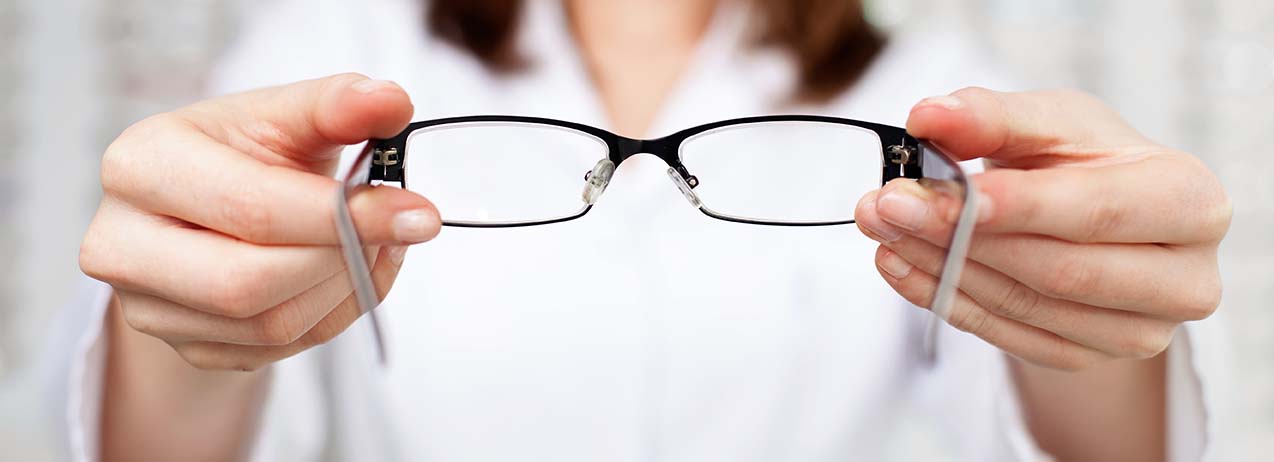
04 Apr Why Choosing the Right Frame With A Trained Optician Is Key
Why Choosing the Right Frame With A Trained Optician Is Key
It can be overwhelming walking into an optical shop with literally hundreds of frame choices. What is the best way to choose the right frame for you?
Letting a trained optician help guide you through the process will help you find the correct frame for your prescription, your face and your style. Opticians are trained and in many cases certified to fit eyeglasses based on many features including the prescription, fit and of course your style.
There is much more to choosing the right frame than whether or not it was seen being worn by a celebrity on their Insta.
In fact, opticians are trained to fit and adjust the right frame, lenses or dispense contact lenses for corrective prescriptions. The American Board of Opticianry offers training and ABO Certification required by many states today. This difficult test covers many areas including lenses, frames and even lab knowledge.
Sometimes the frame we like isn’t the frame that is good for us. People with high prescriptions, for example, should avoid certain styles to get the best vision and overall style. Higher prescriptions are better suited for smaller, fully-rimmed frames. Plastic frames are an even better choice for higher prescriptions as they hide thicker edges that come with the territory. Too large of a frame, and the lens cuts out thick and heavy. Often, special lens materials can make a difference on how a pair of glasses look after they’re made. People with milder prescriptions have more options and can wear semi-rimless or even rimless or drill-mounted styles.
Aside from the frame choice, opticians provide precise measurements that make a difference in your vision. Miscalculations in these measurements can lead to problems like changing the optical center in your glasses or even inducing prism into a prescription! Either of these will cause vision problems and discomfort to the eyeglass wearer.
It’s a bit like wearing a suit that was altered for somebody else and trying to wear it well. The sleeve is a bit short here, or the bodice is a bit tight there. That’s just plain uncomfortable! If your optician isn’t asking to see your prescription before choosing a frame, there is a problem. Your prescription is key to proper frame selection.
An optician is somewhat like a tailor. They are there to help you choose the right frame and lenses for your prescription and the right style to suit you and your lifestyle.
Here’s why opticians make a huge difference in your eyeglass purchase:
- Finding a frame that fits well
- Choosing an optically correct frame for your prescription
- Taking accurate measurements so your lenses come out correctly
- Advising you on the latest styles and frame features
- Assisting in the choice of the latest lens technology, appropriate materials and lens coatings for your prescription
Trained opticians can make the difference in whether a frame feels good or not. The wrong fit and the patient might get “railroad tracks”. You’ve seen railroad tracks—when someone’s frame is so tight that when they take them off there’s a visible imprint on both sides of their head! Uncomfortable and not so good looking! Another mis-step is choosing a frame made from the wrong material. Many low cost frames contain a lot of nickel. While they may feel heavy and “durable”, they can leave green marks on the skin of patients with a high ph-balance. These patients should consider titanium or even plastic frames to avoid this problem. Additionally, nickel frames tend to be brittle in spite of their weight.
As far as style goes there’s lots of things to consider. Face shape, skin-tone, general wear-ability, durability and current fashion trends. Not every frame is for every face. Essentially, you are purchasing a medical device that hopefully looks fabulous. But it needs to achieve both goals—- sharp and clear vision, while looking good. If it misses on either category, it is an epic fail.
The next time you visit an optical or come out of the doctor’s office with your prescription, make sure you let an optician work with you to find the right fit for your prescription, your face and your lifestyle. You’ll be happy you did when you pick up your new eyeglasses!

Sorry, the comment form is closed at this time.